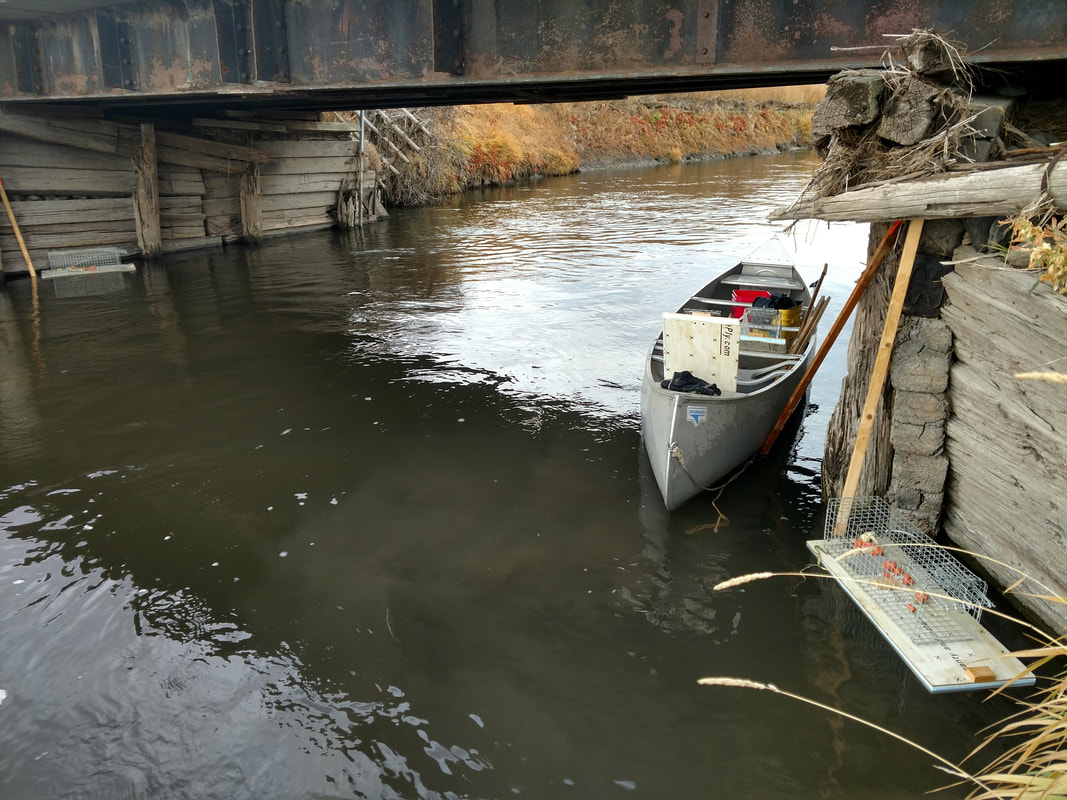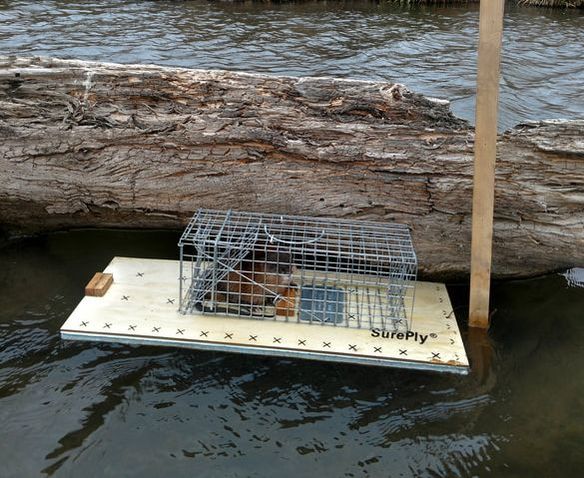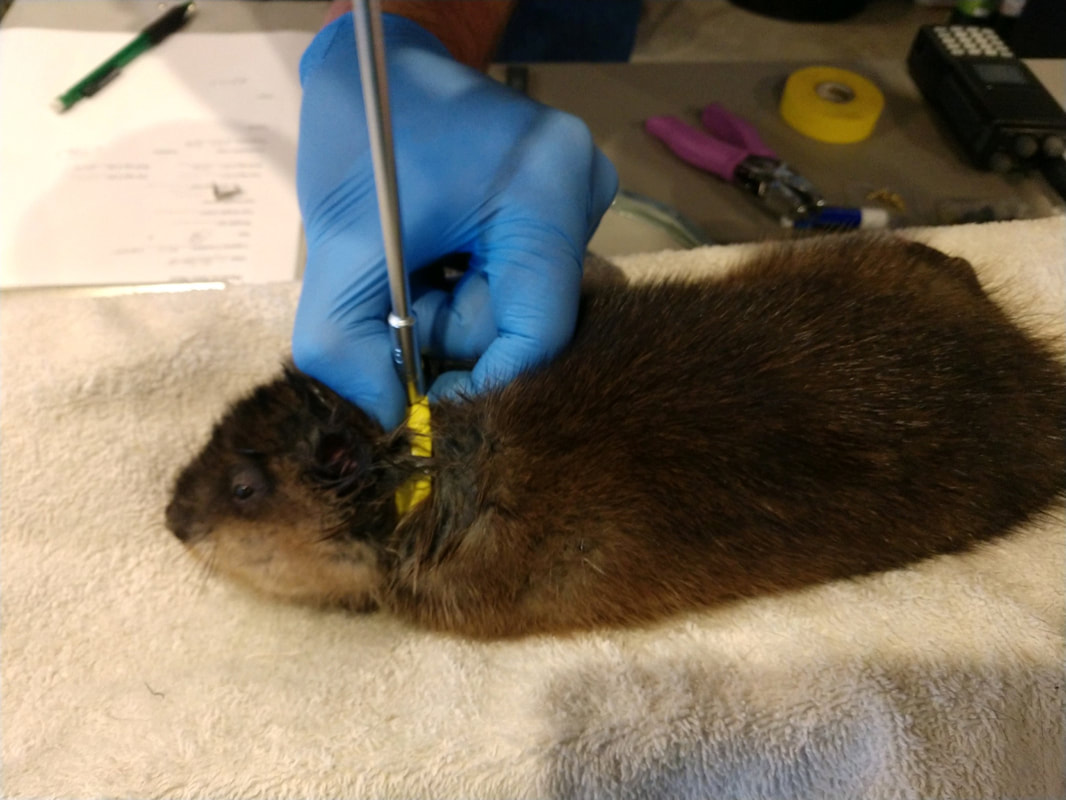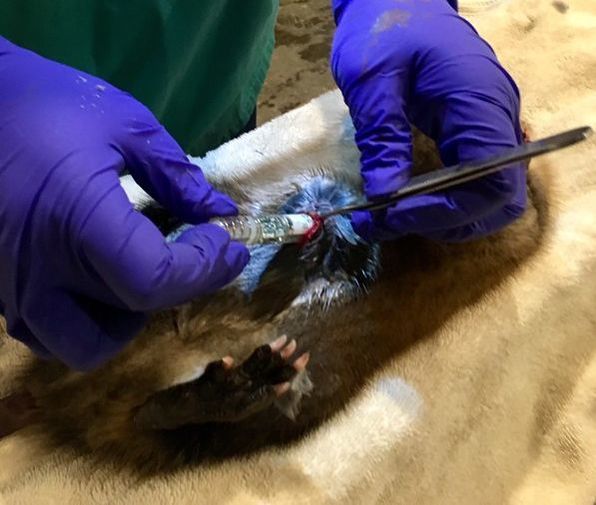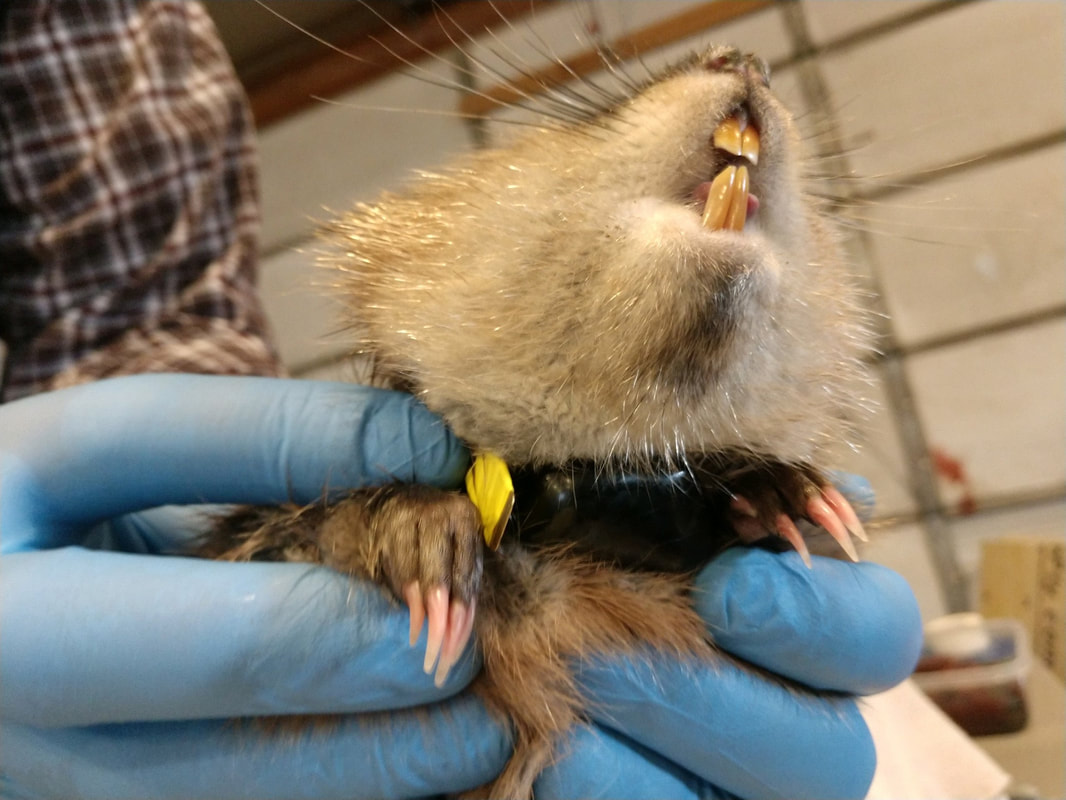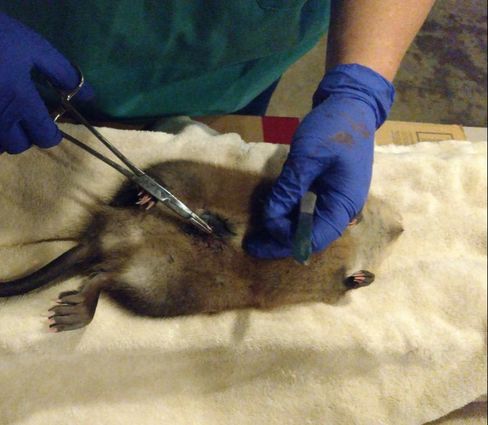Muskrat Transmitter Project
|
Muskrats are a highly important ecological and economic species throughout North America. Historic and continued loss of wetlands has undoubtedly had substantial negative impacts on muskrat populations. Apparent declines in muskrat populations since the mid-1980s have occurred simultaneously with increasing variability or extremity in precipitation events, although a cause-effect relationship has not yet been proven.
Investigating survival and cause-specific mortality of muskrats should provide valuable insight into the factors related to observed population declines. These factors are best assessed using radiomarking and monitoring techniques. However, there is some uncertainty associated with VHF transmitter (collar or implant) use on muskrats. Each of these two transmitter types has advantages and disadvantages. For example, collars may be relatively easy to attach, but post-release attachment success may be an issue due to the fusiform-shaped bodies of muskrats. Conversely, surgically implanted transmitters require special training and chemical immobilization, and longer handling and recovery times for muskrats, but attachment failure should not be an issue. We are testing the efficacy of these two styles of VHF transmitters on muskrats for potential application to larger regional research to assess factors associated with declining populations. This will reduce uncertainty associated with methods, increase project efficiency, allow for accurate budgeting, and address potential relevant concerns about project success. Thanks to Colleen Olfenbuttel (North Carolina Wildlife Resources Commission) for helping fund this project; Dr. Kaylee Senior, DVM (Earthly Creatures Veterinary Services in Montana) for lending her expertise to the project; and the Running W Cattle Co. Ranch for use of their property as our study area!
|
Setting floating cage-traps at locations with muskrat sign. Traps are baited with carrots, apples, and a commercial lure.
Success! Now, load captured muskrats into the canoe, back to the truck, and to radiomark and collect data.
|
|
Attaching a VHF radiocollar to a chemically immobilized muskrat.
Implanting a VHF transmitter in a chemically immobilized muskrat, a more "traditional," but invasive, approach.
|
Muskrats have little in the way of necks, so whether collars will be successfully retained is one of our questions.
Finishing up the sutures after implanting the transmitter, then, wait a bit for the muskrat to recover from chemical immobilization.
|
|
|
|
|
Click on this video to watch a release of one of the implanted muskrats!
Don't forget to make it Full Screen. |
Click on this video to watch a release of 3 recaptured muskrats that we had already radiomarked. Note: the cameraman (Tim) totally failed to tell Jesse that there is in fact a release door on this multiple-capture trap...questionable leadership? You decide!
Don't forget to make it Full Screen. |
Project Partners
Copyright 2024 Wildlife Ecology Institute
